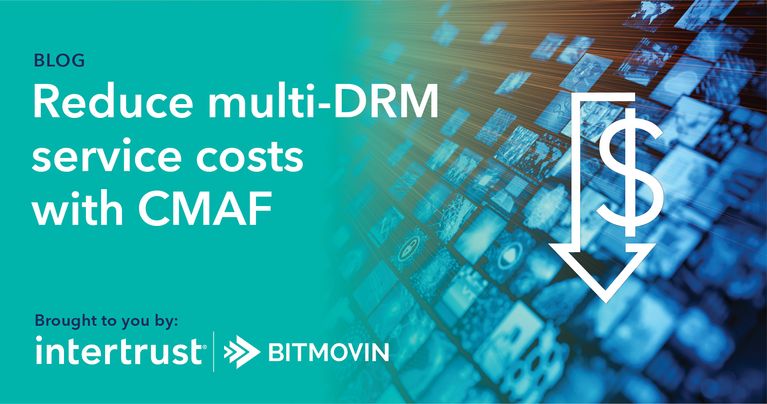Bitmovin Live: APAC Edition 2020
I was delighted to be part of Bitmovin Live: APAC Edition on June 17, 2020 and spoke about “Cost effective multi-DRM service for advanced video streaming” along with my colleague Gadi Ittah, product manager for ExpressPlay DRM cloud service. This virtual Asia Pacific-focused event included a series of sessions on controlling costs, mitigating risk and managing video workflows, with over 500 registrants. Intertrust values its partnership with Bitmovin and it was great to be part of this event along with other decision-makers and technical contributors in the Media & Entertainment industry.
During the session, we reviewed recent security challenges that advanced OTT streaming services are facing. We also examined different factors that impact the decision of building an in-house multi-DRM platform versus contracting with a partner that offers state-of-the-art cloud-based content security service. We discussed the major benefits from a multi-DRM cloud service that will minimize total cost of ownership for any streaming service provider. Then, my colleague Gadi focused on how a streamlined packaging workflow along with Common Media Application Format (CMAF) enables additional cost savings for advanced OTT streaming services.
Packaging and the Common Media Application Format (CMAF)
Protecting content with digital rights management (DRM) adds some extra steps to the packaging process where the content is encrypted and the DRM signaling information is inserted into the media. Each DRM system supports a different encryption mode and each device platform supports a different media container. To serve video content to a large user base, service providers need to create, store and maintain multiple copies of the same content. For example, to address Android and iOS devices and browsers, a service provider is required to have its content prepared in both DASH and HLS formats, where the supported container format is Fragmented MP4 and MPEG2-TS, respectively.
Moreover, each DRM solution has its own preferred encryption mode, with Apple FairPlay streaming requiring Sample AES CBCS, while Widevine and PlayReady support Common Encryption (CENC).
This means multiple content versions are necessary, and results in additional packaging and storage requirements for the different DRM technologies. There is system overhead in this approach, as multiple versions of the same content cause higher loads and reduce CDN efficiencies due to storage caching limitations.
The Common Media Application Format (CMAF) addresses these challenges by standardizing the container format and encryption mode. It mandates Common Encryption (CENC) for encryption mode and mandates fragmented MP4 for container format. CMAF is a standard streaming format across all playback platforms, and it is one step closer to single-approach for encoding, packaging, and storing a single copy of the media content protected by a multi-DRM service.
In addition, CMAF can significantly reduce the end-to-end delivery time or latency, and supports low-latency streaming, which reduces cost and improves the user experience. CMAF is now recognized by all major DRM systems, and has been broadly adopted by many device platforms and browsers. As today’s preferred streaming format, CMAF is supported by both Bitmovin encoders and the ExpressPlay multi-DRM solution.
Streamlined content packaging workflow
Content packaging for protected content needs to be coordinated with the multi-DRM service, which introduces complexities into the packaging process, in particular when multiple parties are involved, resulting in additional costs. The content packager needs to retrieve content encryption keys from a multi-DRM service provider that manages these keys securely. To reduce costs, a streamlined workflow between the packager and multi-DRM provider is crucial.
Bitmovin encoders and packagers and Intertrust ExpressPlay DRM both support the SPEKE protocol, which enables retrieval of the encryption keys and DRM signaling from the ExpressPlay key store. This is the same key store that will later be used to retrieve the keys used in the DRM license. The packaging process is greatly streamlined via Bitmovin’s comprehensive yet simple-to-use interface in multiple languages for packaging the content. For example, Access Control AWS S3 buckets are used, and the packaging process is driven by Python scripts. The SPEKE protocol is used to coordinate the packaging with the ExpressPlay DRM backend system.
I encourage you to access the full recording of the Intertrust webinar session in Bitmovin Live: APAC “Cost effective multi-DRM service for advanced video streaming” to learn more about how CMAF and a streamlined packaging workflow can reduce costs for your OTT streaming service.
You can also learn more about DRM Compatibility coverage supported by ExpressPlay multi-DRM service, or feel free to contact our team to discuss your multi-screen content protection requirements.








